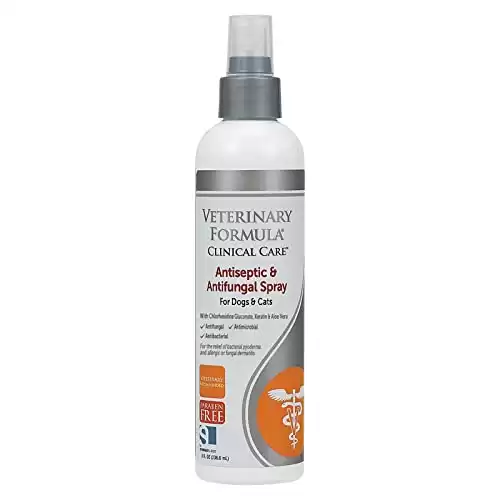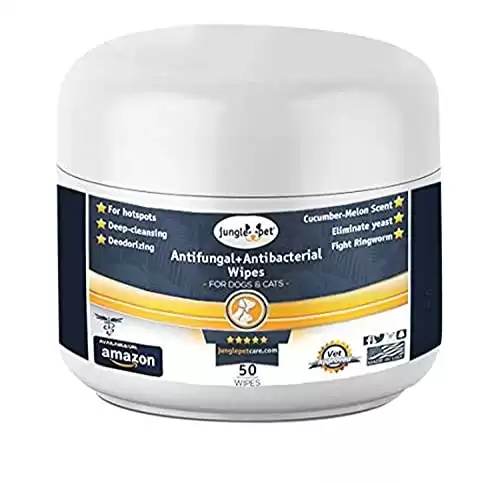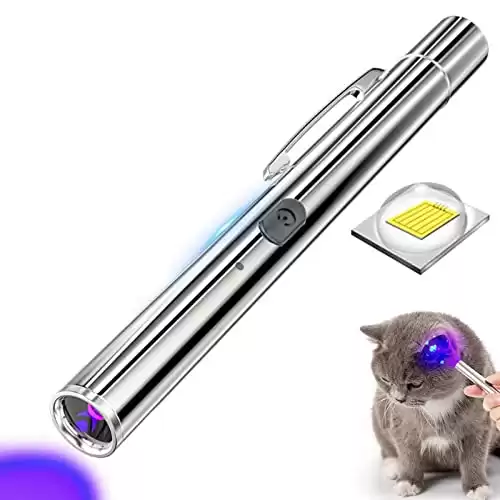There’s a common fungal infection that both humans and animals can get that goes by the name Ringworm. Despite what the name might have you think, there aren’t any worms with ringworm but it’s still a medical condition worth addressing.
If you have a suspicion that your furry feline may have ringworm, you’re in the right place. Because ringworm is incredibly contagious, we’ve made a guide to help you spot, treat, and prevent it from occurring in your cat.
Acting quickly and knowing how to treat the issue can prevent it from spreading in your home. Ringworm can go away on its own but will disappear much quicker with treatment. Let’s start out by talking about identifying this pesky infection.
Identifying Ringworm in Cats
Ringworm is a fungal infection that affects the top surface of the epidermis, hair, and fingernails. The term stems from the circular, red, elevated ‘ring’ that is used to define the edge of inflammation in patients who were sick with the illness.
Ringworm is a misnomer since it is not a worm-based infection, and the diseased regions are not usually ring-shaped. The organism that causes ringworm infections are dermatophytes, a specialist category of fungus. Dermatophytosis is the medical term for this condition.
Certain dermatophytes are species-specific, suggesting they can only infect one kind of animal, but others may move between various animal species or from animals to humans. Almost every ringworm infection in cats is caused by one type of dermatophyte called Microsporum canis.
Dogs and people are also infected by this species. Trichophyton mentagrophytes can cause ringworm infections in cats on occasion. This species is zoonotic, which means it may infect people as well.
How is Ringworm Transmitted?
Direct contact with an affected animal or human, handling contaminated goods, or contact with infected surfaces are all possible ways for it to spread. The fungus spores can live for months, even up to 18 months, on combs, bristles, food bowls, couches, clothing, carpet, bedding, and other common surfaces.
A ringworm infection is not necessarily the result of coming into contact with the fungus. The level of contamination in your home, as well as the age of the person or animal infected, are crucial factors in the growth of a ringworm infection.
Unless there is a breach in the skin, such as a cut, healthy adult people are normally immune to infection. Ringworm infection is more common in the elderly, small children, and individuals with compromised immune systems or skin sensitivity.
How to Diagnose Ringworm in Cats?
When the skin and coat of your cat are inspected in a dark room underneath a special UV lamp called a Wood’s lamp, the majority of instances of feline ringworm caused by M. canis should glow with a yellow-green luminescence.
Unfortunately, not all cases of dermatophytes glow clearly, and some additional dermatophytes species do not light up under a Wood’s lamp. As a result, your cat may require further testing to establish the presence of ringworm fungus. Some skin lotions glow as well, resulting in a false positive.
A laboratory sample of the fungus is the most accurate way for diagnosing ringworm in cats. The vet will collect fur and skin tissue samples during this procedure. A positive culture can occasionally be verified within a few days, but in certain circumstances, the fungus spores are slow to proliferate, and culture findings can take up to a month. Your veterinarian may suggest further testing to rule out other ailments that your feline may be experiencing.
Treatment for Feline Ringworm
While ringworm is a condition that will go away on its own in many cats, lasting three to five months to resolve, treatment is always a good idea to reduce the danger of infection spreading to humans, particularly kids, and other pets.
Topical treatment, such as the administration of lotions, balms, or shampoos, and systemic oral medication are the most popular ways to treat ringworm in cats. Here are some of the main treatment methods for ringworm in cats.
- Recommended by vets
- Very affordable
- Works very fast
- Can be used on dogs and cats
Topicals
Sometimes vets use topical therapy on their own to treat ringworm, although it is most usually used in conjunction with oral medicine. You can treat ringworm using a variety of lotions and ointments that can be applied to specific parts of the skin. If ringworm is found in only one or two locations, shaving the fur in smaller sections may be adequate.
If your cat has a more widespread condition or is a longhaired feline, your veterinarian may prescribe trimming all of your cat’s hair and washing your cat at least twice a week with a medicated shampoo. It’s critical to only employ preparations that your veterinarian has expressly prescribed or suggested.
Typically, topical therapy is required for several weeks to many months. Wash your hands after washing or treating your cat, and sterilize any surfaces your cat has come into touch with a bleach solution.
- Treats skin problems
- Relieve infections like ringworm
- Medicated wipes
- Made in the USA
Oral
In most cases of ringworm, successful therapy will include the use of antifungal medicine taken orally. Individual cats respond differently to treatments, and if you stop the medication too early, the condition may reoccur. Treatment usually lasts at least six weeks, although, in certain situations, much longer treatment is necessary.
Following the start of therapy, the vet will collect ringworm samples to see if your pet is still sick. it’s important to remember to never stop the medication unless your veterinarian advises you to. A return of the fungus might occur if the pet parent stops treatment too soon.
Maintain treatment until your vet collects two negative ringworm samples in a row. If you have more than one pet, try to keep infected and non-infected animals apart.
Cleaning House
Many small fungus spores can be shed into your home from infected hairs. Other pets and people can become infected by coming into direct touch with an infected cat or coming into contact with fungal spores in a polluted area.
Aside from avoiding close contact with an infected cat, it’s also critical to keep the surroundings as spore-free as possible. Hair clipping coupled with topical antifungal treatment of afflicted skin regions can assist to decrease infection in the surroundings. It’s critical to clean pet hair off of floors and furniture because it might contain fungal spores.
It’s also a good idea to confine the cat to easy-to-clean areas of the house. You can reduce contamination in other pets by thoroughly wet mopping and vacuuming any rooms or spaces that your cat has access to on a regular basis.
Treatment of ringworm in multi-animal establishments such as animal shelters or kennels can be difficult and expensive.
Prevention
The fungi that produce ringworm prefer warm, moist conditions, such as dirt. They then adhere to human and animal hair and skin cells that are shed. Although there isn’t much you can do to avoid these illnesses, there are a few things you can do to protect yourself, your pets, and your family. We suggest the following:
- Clean your cat or dog’s beds and blankets on a regular basis.
- Remove any hairs from your pet’s grooming brush every time you use it.
- Vacuuming your home regularly will help to remove skin cells and hair.
- Disinfect any other shared areas of your home where your pets are likely to congregate.
- Features an aluminum alloy body
- Multifunction
- Strong penetrating power
- Features a UV filter lens
Recovery
The secret to getting rid of ringworm in your cat is dedication. Infected animals release spores into the surroundings, making it just as vital to clean the spaces where your cat spends time as it is to treat your cat. All pets that have come into touch with the cat with ringworm should seek medical attention and quarantine until the illness is confirmed.
When you provide vigorous treatment, cats with ringworm will be infectious for around three weeks. Therefore, the infection will be able to persist for a long time. Ringworm might last anywhere from six months to a year. During this time, keep your sick cat away from other pets, items, places, and family members. When touching your cat, wear gloves and wash your hands well after.
Most cats with ringworm will recover with proper treatment, and you should notice progress within three weeks. Symptoms can reappear if you stop therapy too soon or is not strong enough, or if your furry friends have a weak immune system from an underlying ailment. If the infection does not go away, your veterinarian may need to try different drugs.
The photo featured at the top of this post is © eremeevdv/Shutterstock.com
Thank you for reading! Have some feedback for us? Contact the AZ Animals editorial team.









